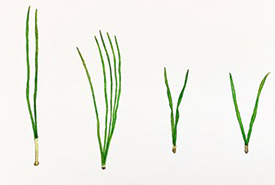Paring Down: Patagonia in 10 Photos

Patagonia’s renowned Torres del Paine National Park encompasses glaciers, lakes, mountains and rivers. Located in a transition zone between the Magellanic subpolar forests and the Patagonian steppes is the Cordillera del Paine, the centerpiece of the park. Here, two of the three toothy towers of the cordillera have just managed to slip out of the clouds. ©Candice Gaukel Andrews
For the past year, now, your travels have probably been small ones, perhaps no farther than your own backyard or local park. So, if you’re like me—until it feels more comfortable getting out and about again—you’re reliving big, past journeys in your mind.
Recently, I’ve been thinking about a trip I took to Scotland several years ago, where I picked up a small box containing five, miniature, national heroes cast in pewter. That made me wonder: if all of Scotland’s history can be pared down to five figurines, could I scale down a place to a few essential images that get at its essence?
To make the challenge even more interesting, I decided to start with one of the biggest and most expansive places I’ve ever traveled to: Patagonia.
Below, I’ve selected a few photos I took on a trip to Patagonia several years ago. Let me know if you think I succeeded in my quest.

In Patagonia, endless waterways grace the landscape. Glacial lakes and streams, freestone rivers, spring creeks and tailwaters are all scattered throughout the region. ©Candice Gaukel Andrews

Many of Patagonia’s rivers are untouched, running through unspoiled and semiwild country. ©Candice Gaukel Andrews

In the UNESCO World Heritage site of Patagonia’s Peninsula Valdes, you can walk alongside huge colonies of southern elephant seals, the largest members of the seal family. The peninsula is the only continental region where elephant seals have established a breeding colony. The animals’ clumsiness on land contrasts with their incredible agility in the water. ©Candice Gaukel Andrews

A flightless, South American relative of the ostrich, the lesser rhea (or Darwin’s rhea) stands about five feet tall and has a body that is approximately the size of a sheep. The rhea is an adept runner, balancing with its wings spread like sails. This is a bird meant to roam widely on Patagonian steppes and in open areas in the Andes. ©Candice Gaukel Andrews

South American “gauchos” are cowboys who live by the land, often spending long periods of time on the range with their cattle and sheep herds. Gauchos are important symbols of freedom and national pride, and their traditions—whether it’s passing around a gourd of yerba mate or wearing a chiripa girding the waist—symbolize a set of values in Patagonia: beautiful yet calloused; timeless but threatened. ©Candice Gaukel Andrews

The most extensive surviving populations of guanacos—camelid natives to South America that are closely related to llamas—occur in Argentina. They live in dry regions, such as on open grasslands and on arid shrublands, subject to high winds, snowfall and subzero temperatures. ©Candice Gaukel Andrews

There are literally hundreds of mountain peaks in Patagonia, and it would take a lifetime to get to know or see them all. But if you seek adventure, peace and solitude, there’s nothing better than a mountain hike in Patagonia. ©Candice Gaukel Andrews

It’s rare to find snowy peaks, lush vegetation and a pristine river all in one location. In Patagonia, it’s possible. ©Candice Gaukel Andrews

Exuding cold-blue hues, the 121-square-mile Perito Moreno Glacier, located in Patagonia’s Los Glaciares National Park, is part of an ice field that is the third largest reserve of freshwater in the world. If you wait for a while by this UNESCO World Heritage site, you’ll likely witness huge chunks of ice fracture off and crash into the water, creating a massive, reverberating roar. ©Candice Gaukel Andrews
Our worlds may be a bit smaller than we’d like right now, but there’s one thing that never diminishes: your dreams of adventures around the world.
I’m sure I’ll see you “out there” again, soon.
Here’s to finding your true places and natural habitats,
Candy
About the author: Candice Gaukel Andrews View all posts by Candice Gaukel Andrews
A multiple award-winning author and writer specializing in nature-travel topics and environmental issues, Candice has traveled around the world, from the Arctic Circle to Antarctica, and from New Zealand to Scotland’s far northern, remote regions. Her assignments have been equally diverse, from covering Alaska’s Yukon Quest dogsled race to writing a history of the Galapagos Islands to describing and photographing the national snow-sculpting competition in her home state of Wisconsin.
In addition to being a five-time book author, Candice’s work has also appeared in several national and international publications, such as “The Huffington Post” and “Outside Magazine Online.” To read her web columns and see samples of her nature photography, visit her website at www.candiceandrews.com and like her Nature Traveler Facebook page at www.facebook.com/naturetraveler.




